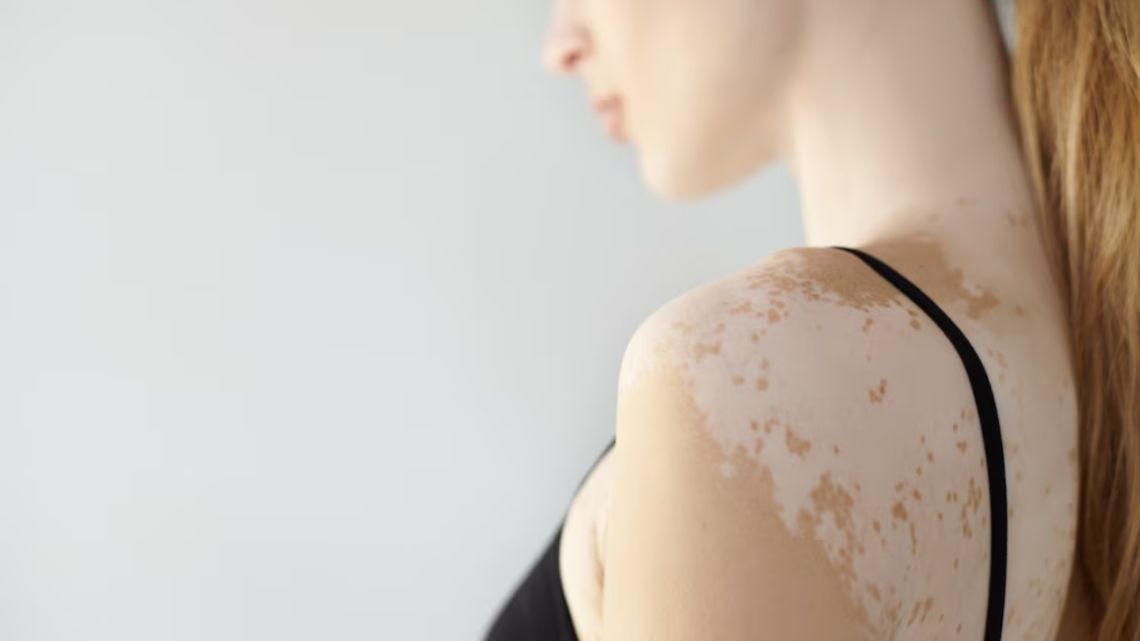This Sunday, like every June 25, commemorates the World Vitiligo Daya chronic skin disease characterized by the appearance of white spots on different parts of the body as a result of skin depigmentation.
Vitiligo is a chronic skin disease in which loss of pigmentation occurs when the cells that produce melanin die or stop working”, explained in dialogue with PROFILE the dermatologist Lisa MolinariDirector of the Skin Medical Center located in the City of Buenos Aires.
This disease can affect men and women equally, whether they are children or adults.
Once said loss of pigmentation occurs, as a consequence appear white spots throughout the body of patients. Although this does not imply major health complications, it can strongly affect people emotionally.
“It is not painful or contagious. It has no symptoms or impacts on your health, but the disease may be associated with self-esteem problems, difficulty in social relationships and anxiety due to the uncertainty about the evolution and treatment,” Molinari said.
In this sense, the dermatologist maintained that “anxiety and stress make the disease itself worse”which could involve the patient in a cycle of wear and psychological pressure that aggravates the appearance of the spots.
What is histoplasmosis, a silent and deadly disease
Regarding the reasons that trigger this disease, the dermatologist pointed out that “The exact cause is unknown”although “it is believed to be the result of a combination of genetic, autoimmune, and environmental factors.”
“It has been observed that there is a higher incidence in people with family background of the illness. At the same time, it has also been associated with triggers such as stress, skin injuries and autoimmune diseases“, he remarked.
It is worth mentioning that Vitiligo can affect both children as adults and usually appears between 10 and 30 yearsmost frequently affecting the area of the face, around the eyes, nose and mouth, and the back of the hands and feet.
Winnie Harlow is a famous model recognized for making Vitiligo visible on the catwalk.
“There is no definitive cure for Vitiligo”stated Molinari, although he made reference to the different treatments currently available, including “the use of topical medicationsthe light therapy (phototherapy), the laser treatments, oral therapy and in some cases, surgical procedures“.
In this way, in dialogue with this medium, he insisted that “the choice will depend on the patient and the individual medical evaluation” that is carried out in each case.
Regarding surgical procedures, the dermatologist mentioned the skin transplantan option little implemented, and clarified: “Although the risks are very low, it must be remembered that white spots have an aesthetic impact, and leave a scar in another area, in the first instance, not cost effective for the patient“.
The emotional and psychological cost
“Vitiligo can have a significant emotional impact on those who experience it”stated the medical professional and reiterated that the appearance of white spots on the body “can cause anxiety, low self-esteem, depression and difficulty in interactions social”.
As a consequence of stigmas and prejudices, Vitiligo patients do not suffer from the disease as such, but from the exposure it produces and the amount of discriminatory and hurtful comments they may receive.
“Statistics show that patients with dermatological diseases have 20% more psychological disorders than the rest of the population,” said Molinari based on different studies consulted.
Therapeutic tattoos: they ‘cure’ vitiligo with ink and draw on scars and marks
Likewise, he emphasized the fundamental role of age and the impact that the diagnosis produces on the patient. “Most diagnoses are made before the age of 30, a stage of life that can be considered very sensible from an emotional point of view,” he explained.
“It is essential to provide Emotional Support to the affected people, encourage acceptance of their status and promote awareness and inclusion in society”, concluded the dermatologist, emphasizing the importance of complementing treatments with psychological assistance whenever necessary.
AS/ff
